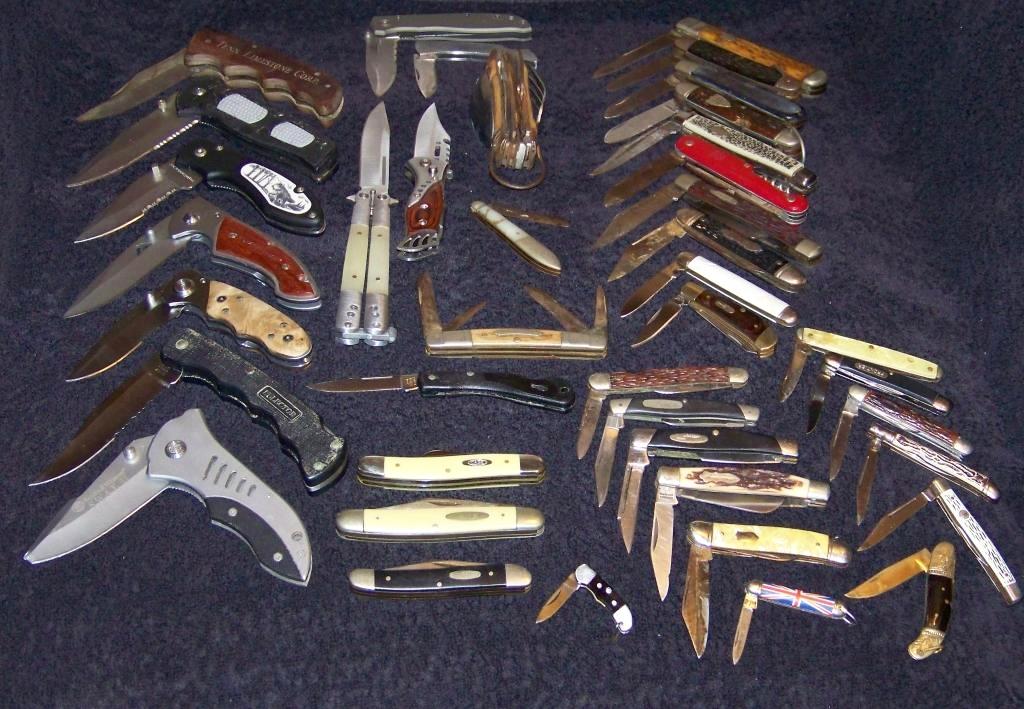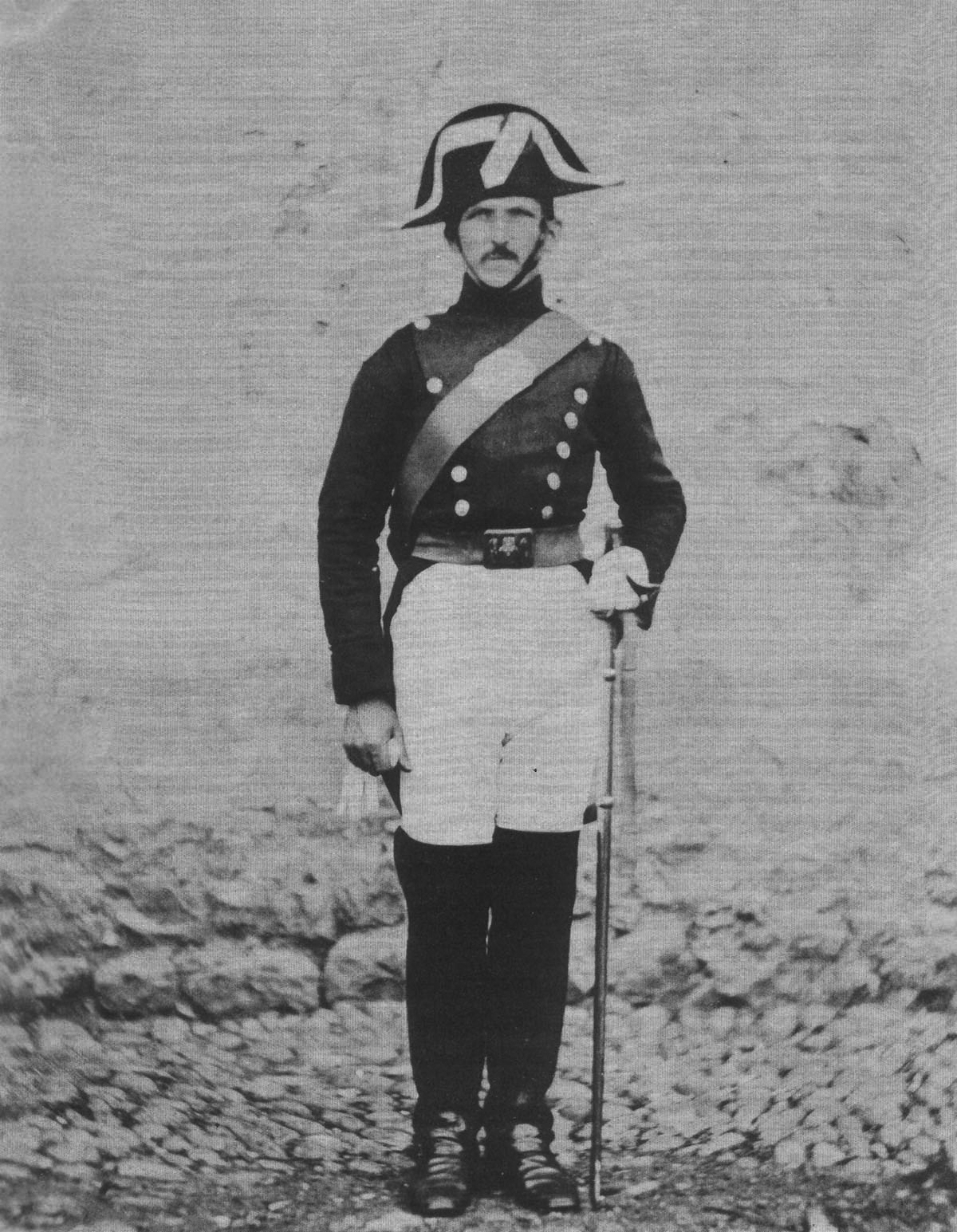|
Navaja
The ''navaja'' is a traditional Spanish folding-blade fighting knife, fighting and utility knife.de Rementeria y Fica, Mariano, ''Manual of the Baratero'' (transl. and annot. by James Loriega), Boulder, CO: Paladin Press, (2005) Etymology The etymology of the word ''navaja'' is derived from the Latin ''novacula'', meaning ''razor'', and the Andalusian knife known as the ''navaja'' is thought to have derived from the ''navaja de afeitar'', or Straight razor#History, straight razor used for shaving. A popular slang term for the ''navaja'' in the 19th century was ''herramienta'', which translates as "(iron) tool". In Spain, the term ''navaja'' is often used to generally describe all folding-blade knives and epitomized the concept of a defensive knife to be carried at all times on the person. Most of the larger ''navajas'' of the early 19 centuries were clearly intended as fighting knives, and were popularly referred to as ''santólios'', a contraction of the Spanish term for " ... [...More Info...] [...Related Items...] OR: [Wikipedia] [Google] [Baidu] |
Navaja Folding Knife, Circa 1790
The ''navaja'' is a traditional Spanish folding-blade fighting and utility knife.de Rementeria y Fica, Mariano, ''Manual of the Baratero'' (transl. and annot. by James Loriega), Boulder, CO: Paladin Press, (2005) Etymology The etymology of the word ''navaja'' is derived from the Latin ''novacula'', meaning ''razor'', and the Andalusian knife known as the ''navaja'' is thought to have derived from the ''navaja de afeitar'', or straight razor used for shaving. A popular slang term for the ''navaja'' in the 19th century was ''herramienta'', which translates as "(iron) tool". In Spain, the term ''navaja'' is often used to generally describe all folding-blade knives and epitomized the concept of a defensive knife to be carried at all times on the person. Most of the larger ''navajas'' of the early 19 centuries were clearly intended as fighting knives, and were popularly referred to as ''santólios'', a contraction of the Spanish term for "holy oil". The name was a reference to ... [...More Info...] [...Related Items...] OR: [Wikipedia] [Google] [Baidu] |
Fighting Knife
A fighting knife has a blade designed to most effectively inflict injury in close-quarters physical confrontations.Burton, Walter E., ''Knives For Fighting Men'', Popular Science, July 1944, Vol. 145 No. 1, p. 150Hunsicker, A., ''Advanced Skills in Executive Protection'', Boca Raton FL: Universal Publishers, , , p. 51Thompson, Leroy, ''Fairbairn–Sykes Commando Dagger'', Oxford, UK: Osprey Publishing, , (2011), p. 71Lee, David, ''Up Close and Personal: The Reality of Close-quarter Fighting in World War II'', Naval Institute Press, , 9781591149071 (2006), p. 117: "At the top of the list is the fighting knife. Using this weapon requires the soldier to close right in with his enemy. The fact that its use is going to be bloody and horrible means that only a strong or well conditioned individual is going to be able to use it in anger." The combat knife and the trench knife are examples of military fighting knives.Peterson, Harold L., ''Daggers and Fighting Knives of the Western Wor ... [...More Info...] [...Related Items...] OR: [Wikipedia] [Google] [Baidu] |
Bowie Knife
A Bowie knife ( ) is a pattern of fixed-blade fighting knives created by Rezin Bowie in the early 19th century for his brother James Bowie, who had become famous for his use of a large knife at a duel known as the Sandbar Fight. Since its first incarnation, the Bowie knife has incorporated several recognizable and characteristic design features. However, in common usage, the term refers to any large sheath knife with a crossguard and a clip point, although there are exceptions and special cases. The knife pattern is still popular with collectors; in addition to various knife manufacturing companies, hundreds of custom knifemakers produce Bowie knives with different types of steel and variations in style. Historical complications Murky definitions, limited supporting documentation, and conflicting claims complicate the early history of the Bowie knife. The Bowie knife is not well defined. By the mid-20th century, most included some blade length and shape combination. In the ... [...More Info...] [...Related Items...] OR: [Wikipedia] [Google] [Baidu] |
Pocket Knife
A pocketknife (also spelled as pocket knife) is a knife with one or more blades that fold into the handle. They are also known as jackknives, folding knives, EDC knife, or may be referred to as a penknife, though a penknife may also be a specific kind of pocketknife. A typical blade length is . Pocketknives are versatile tools, and may be used for anything from whittling and woodcarving, to butchering small game, gutting and filleting small fish, aiding in the preparation of tinder and kindling for fires, boring holes in soft material, to opening an envelope, cutting twine, slicing fruits and vegetables or as a means of self-defense. Pocketknives may also be used in conjunction with other tools and equipment for woodcraft and bushcraft. Specialised designs are also used for mushroom hunting and gardening. Pocketknives designed for gardening include pruning knives, which are folding knives with long curved blades used for pruning, trimming cuttings, taking buds and preparing ... [...More Info...] [...Related Items...] OR: [Wikipedia] [Google] [Baidu] |
Utility Knife
A utility knife is any type of knife used for general manual work purposes.Peterson, Harold L., ''Daggers and Fighting Knives of the Western World'', London: Herbert Jenkins Ltd., , p. 1 Such knives were originally fixed-blade knives with durable cutting edges suitable for rough work such as cutting cordage, cutting/scraping hides, butchering animals, cleaning fish scales, reshaping timber, and other tasks. Craft knives are small utility knives used as precision-oriented tools for finer, more delicate tasks such as carving and papercutting. Today, the term "utility knife" also includes small folding-, retractable- and/or replaceable-blade knives suited for use in the general workplace or in the construction industry. The latter type is sometimes generically called a Stanley knife, after a prominent brand designed by the American tool manufacturing company Stanley Black & Decker. There is also a utility knife for kitchen use, which is sized between a chef's knife and p ... [...More Info...] [...Related Items...] OR: [Wikipedia] [Google] [Baidu] |
Unguent
An unguent is a soothing preparation spread on wounds, burns, rashes, abrasions or other topical injuries (i.e. damage to the skin). It is similar to an ointment, though typically an unguent is oilier and less viscous. It is usually delivered as a semi-solid paste spread on the skin, and it is often oily in order to suspend the medication or other active ingredients. During the Victorian era, the use of the unguent macassar oil on the hair became so popular that antimacassars were invented to prevent damage to furniture.Fleming, John & Hugh Honour. (1977) ''The Penguin Dictionary of Decorative Arts. '' London: Allen Lane, p. 26. Mercurochrome unguent Various preparations of mercurochrome unguent are occasionally used as adjunct therapy Adjuvant therapy, also known as adjunct therapy, adjuvant care, or augmentation therapy, is a therapy that is given in addition to the primary or initial therapy to maximize its effectiveness. The surgeries and complex treatment regimens use ... [...More Info...] [...Related Items...] OR: [Wikipedia] [Google] [Baidu] |
19th Century London
During the 19th century, London grew enormously to become a global city of immense importance. It was the List of largest cities throughout history, largest city in the world from about 1825, the world's largest port, and the heart of Financial centre, international finance and International trade, trade. Railways connecting London to the rest of Great Britain, Britain, as well as the London Underground, were built, as were roads, a modern sewer system and many famous sites. Overview During the 19th century, London was transformed into the world's largest city and capital of the British Empire. The population rose from over 1 million in 1801 to 5.567 million in 1891. In 1897, the population of "Greater London" (defined here as the Metropolitan Police District plus the City of London) was estimated at 6.292 million. By the 1860s it was larger by one quarter than the world's second most populous city, Beijing, two-thirds larger than Paris, and five times larger than New ... [...More Info...] [...Related Items...] OR: [Wikipedia] [Google] [Baidu] |
Guardia Civil
The Civil Guard (; ) is one of the two national law enforcement agencies of Spain. As a national gendarmerie, it is military in nature and is responsible for civil policing under the authority of both the Ministry of the Interior and the Ministry of Defence. The role of the Ministry of Defence is limited except in times of war when the Ministry has exclusive authority. The corps is colloquially known as the ' (the meritorious or the reputables). In annual surveys, it generally ranks as the national institution most valued by Spaniards, closely followed by other law enforcement agencies and the armed forces. It has both a regular national role and undertakes specific foreign peacekeeping missions and is part of the European Gendarmerie Force. As a national gendarmerie force, the Civil Guard was modelled on the French National Gendarmerie and has many similarities. As part of its daily duties, the Civil Guard patrols and investigates crimes in rural areas, including highways and ... [...More Info...] [...Related Items...] OR: [Wikipedia] [Google] [Baidu] |
Kingdom Of The Two Sicilies
The Kingdom of the Two Sicilies () was a kingdom in Southern Italy from 1816 to 1861 under the control of the House of Bourbon-Two Sicilies, a cadet branch of the House of Bourbon, Bourbons. The kingdom was the largest sovereign state by population and land area in Italy before the Italian unification, comprising Sicily and most of the area of today's ''Mezzogiorno'' (southern Italy) and covering all of the Italian peninsula south of the Papal States. The kingdom was formed when the Kingdom of Sicily merged with the Kingdom of Naples, which was officially also known as the Kingdom of Sicily. Since both kingdoms were named Sicily, they were collectively known as the "Two Sicilies" (''Utraque Sicilia'', literally "both Sicilies"), and the unified kingdom adopted this name. The king of the Two Sicilies was Expedition of the Thousand, overthrown by Giuseppe Garibaldi in 1860, after which the people voted in a plebiscite to join the Kingdom of Sardinia (1720–1861), Kingdom of Sardi ... [...More Info...] [...Related Items...] OR: [Wikipedia] [Google] [Baidu] |





